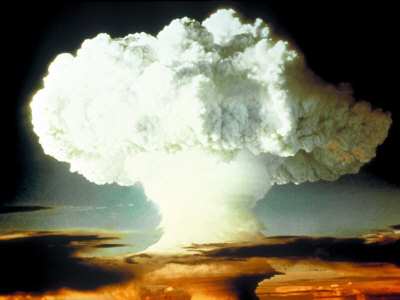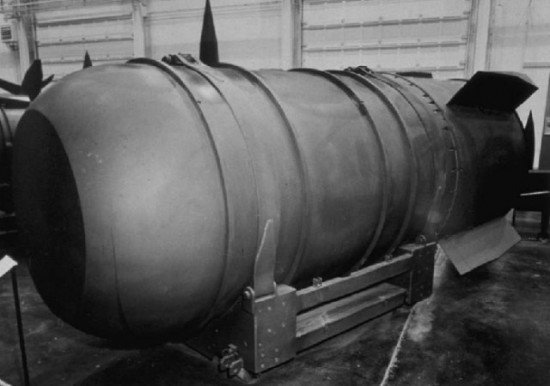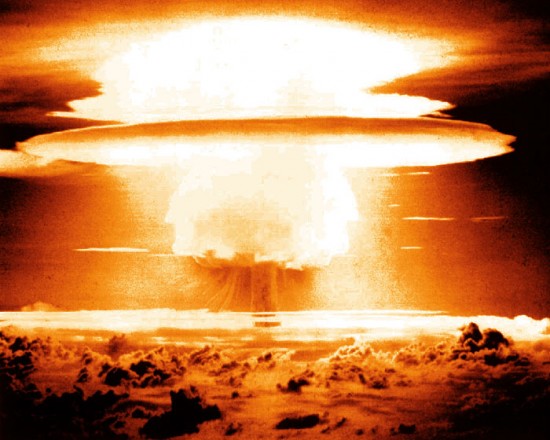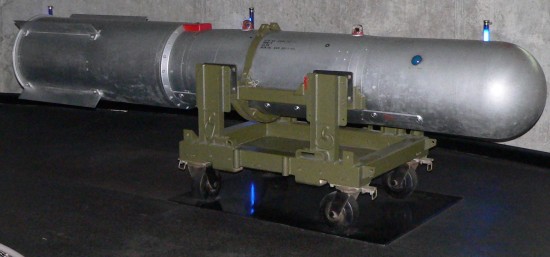# 8
Hurricane
The British first atomic test was conducted on October 1952 and was codenamed as Operation Hurricane. The weapon was similar to the Fat Man although they introduced design modification to increase its fire power and blast yield was 25 kilo Ton. The Hurricane was further modified to Trident missiles which was Submarine Launched Ballistic Missile. Modern variants are capable of delivering multiple independently targeted reentry vehicles (MIRVs) each of which carries a warhead and allows a single missile to attack several targets. They are carried by US Navy, Ohio Class Submarines and Vanguard Class Submarines. The range is its most unique ability i.e. an approximate of 8000 km.


[youtube]http://www.youtube.com/watch?v=HAlcMPti7EA[/youtube]
#7
Ivy Mike
The first successful United States Hydrogen bomb test codenamed Ivy Mike. The mechanism was a bit different from other atomic bombs it uses the fusion technique to create large amount of heat energy. The Hydrogen bomb is the most difficult to control as two light elements combine to give a heavy element with the production of huge amount of energy. The design was not therefore successful and was retired due to its physical size and fusion fuel type. The test was carried out in November 1952; test yielded almost an equivalent to 10.4-12 MT, The fireball was approximately 3.25 miles, and the mushroom cloud rose to an altitude of 33 km in one minute and thus Mike Device holds a rank of 7th in our Deadliest Top Ten Nuclear Weapons.

[youtube]http://www.youtube.com/watch?v=NNcQX033V_M[/youtube]
#6
Mk-21
The United States first nuclear gravity bomb. A total of 275 warheads were created. The minimum blast yield of Mk-21 was 4 Mega Ton. Due to its successful design and quality the Mark-21 holds a rank of 6 in our ranking. Later they were converted to a better transformed Nuclear Weapon named Mark-36 and all these were evolved to it.
#5
Mk-36
The modified version of Mk-21 was called Mk-36 which was much more efficient than its predecessor. A total of 920 such bombs were produced. It remained to service for five years and was then retired in the year 1962.

#4
Castle Bravo
A First US test of a dry fuel thermo nuclear hydrogen bomb device was code named Castle Bravo. Detonated/ tested in the year 1954 at Bikini Atoll, Marshall Islands. Castle Bravo was one of the most powerful nuclear devices ever detonated by the United States with a blast yield of 15 Mega tons. The blast mechanism used was Surface Blast. The diameter of its fireball was 7 miles; the height of the mushroom cloud was 14 km and the fall out contaminated 7 thousand miles. The test day of Castle Bravo was named as “The day the Sun rose twice” and hence lies on number 4th in our countdown list.



